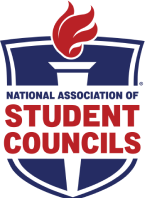Section B
The impact of student council service projects can be maximized by using them as service learning activities. A favorite acronym for those who use service learning to engage students and enhance the volunteer experience is PARC. PARC stands for Plan, Act, Reflect, and Celebrate, and reminds all involved in service learning activities that to be successful, students plan what they are going to do, act on their plans, reflect on their experiences, and celebrate their efforts and successes.
The 4 Parts of Service Learning
(Source: Service Learning Raising Service Projects to the Next Level: A Guide for Student Activity Advisers, NASSP Office of Student Activities and Quest International, 1997)
Service learning is a process that features four basic stages through which students’ progress:
- The first of these is the Preparation Stage. In this stage students take an active part in identifying needs, assessing their own group’s skills and talents, and developing plans that will be carried out in the next phase of the process.
- During the Action Stage, students respond to the call of service. They use their combined academic skills and knowledge as they become active community members. Most activities fall into one of the three action categories:
- Indirect Service activities provide goods or products to a needy cause without students having direct contact with the beneficiaries.
- Direct Service activities place students in direct contact with people in need, creating rich interactions and immediate feedback from diverse populations.
- Civic Action or Advocacy activities involve students in addressing the cause of a social issue, e.g., a voter registration or drug prevention campaign.
- The next stage of service learning is called Reflection. It is here that students explore their feelings about the service experience, and then integrate that into empathy for others and a deeper sense of personal and community values. The method for reflection varies according to the action students have taken and the creativity of the adviser. Methods that encourage students to reflect on their service experience might include individual or group writing, small and large group discussions, role plays, photo essays, poetry, art, journals, and music. Whichever methods are used, feedback to student council members in the reflection process acknowledges adviser support for their growth and development, helps them recognize their progress, and affirms the act of reflection.
- The final stage of service learning is Demonstration. In this stage, students take charge of their own learning—they process what they have accomplished, identify what they still need to know, and determine the next steps to be taken in service to the community. Demonstration can take the form of a presentation, and article in the newspaper, or letters to community leaders.
While all student council service projects might not fit fully into service learning, the service learning model presents a format that helps student leaders select and more successfully develop even the simplest of service ideas into meaningful projects that can have greater impact on the volunteers.
